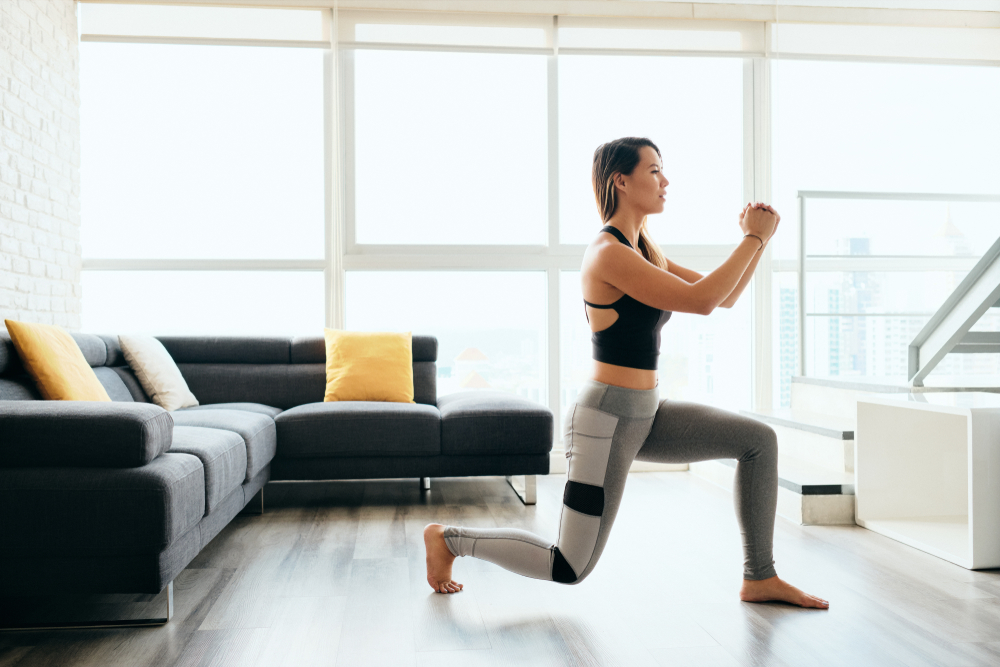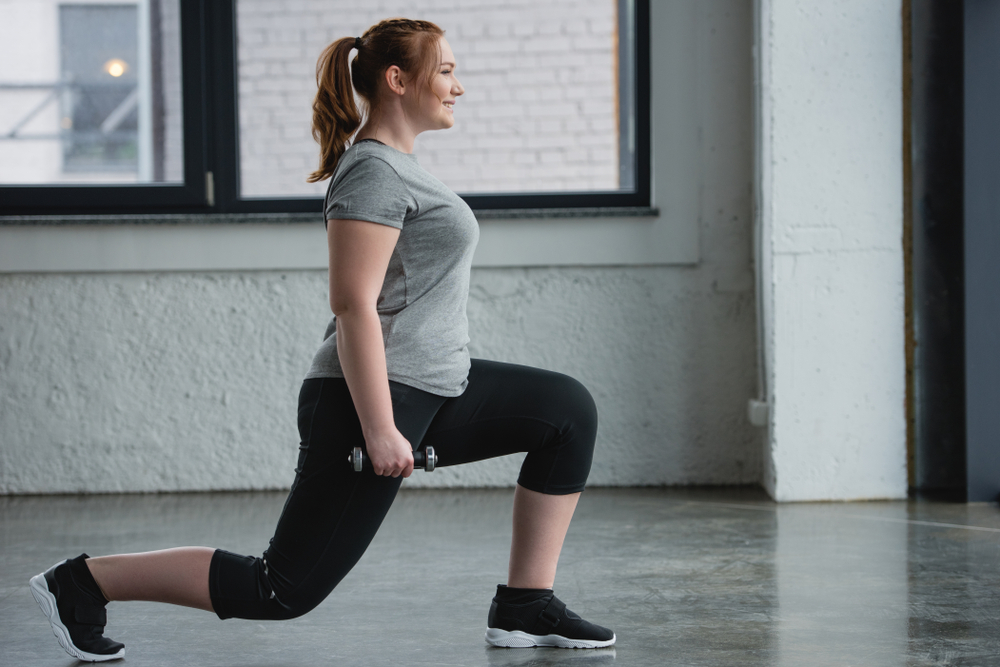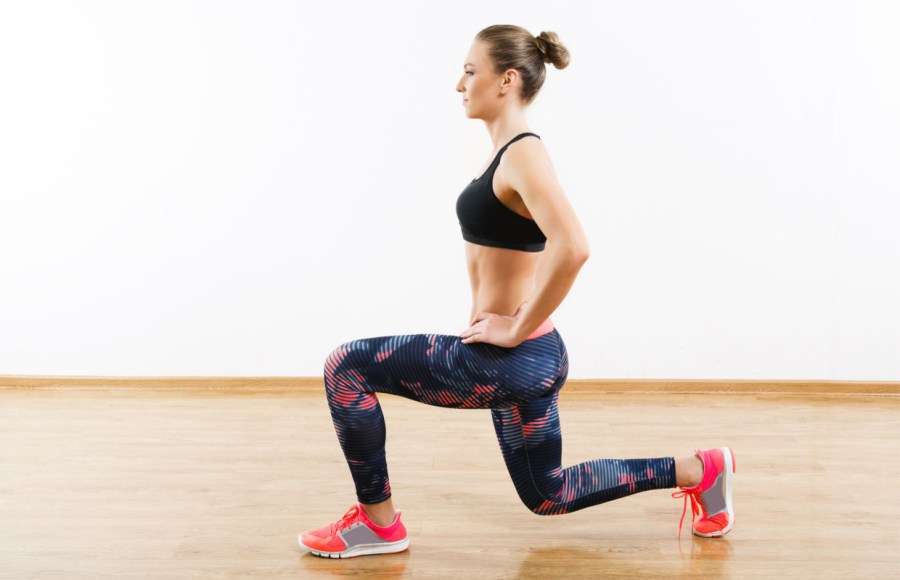Build your strength and fitness with classic body moves – no equipment required. Here, personal trainer Sam Edgar takes us through a step-by-step guide on how to do a lunge correctly, before explaining the benefits of this exercise…
How to do a lunge correctly
It’s important to learn how to do a basic lunge correctly first before progressing the exercise further.
- Start by standing upright with a neutral spine, chest lifted, shoulders back and feet hip width apart.
- Brace your abdominal muscles to give you stability and take a step forward.
- From here lower your hips slowly down vertically until both knees are at 90 degrees, and then return to the starting position.
Work your whole body in this full body dumbbell workout for women
What does a lunge work?
The lunge is such a fabulous exercise for the entire lower body and core. Primary muscles working during a lunge are the quads and hamstrings in your thighs; calf muscles in your lower leg and glutes in your bottom. Your abdominal and back muscles are also engaged to keep you balanced during the lunge movement.
Benefits of lunges
The main reason lunges are so good for you (especially once you learn how to do a lunge correctly) is because it’s an excellent functional exercise that can be performed anywhere, improving strength by engaging all of the lower body in one movement, saving you precious time!
Because of the number of muscles involved, the lunge will improve overall lower body strength. Increased leg strength is a result of improved body composition by having more muscle, which in turn increases the body’s metabolism – and calorie burning.
Because the lunge is a complex move, performed on one leg at a time, your core strength will develop because it will be constantly engaged to control the movement, with your balance and coordination improving too!

Top tips for lunging success:
- To maximise this exercise, 80 per cent of your weight should be on the front leg, ensuring the front knee doesn’t go over the toes as you lower down. This will protect the knees from injury.
- When you return to the starting position make sure you are pushing through the heel of the front foot to really engage the front thigh muscles and to avoid knee discomfort.
- Check you are able to wiggle your toes in the front foot – you’ll then know you’re doing it right! The remaining 20 per cent should be in the back foot to act as a stabiliser.
- When learning how to do a lunge correctly, keep your upper body upright by bracing your abdominal muscles and keeping your chest lifted and shoulders back; this will ensure you are correctly aligned and reduce stress on the spine.
Related: Pilates for posture: 7 posture correction exercises
How many lunges should I do – and how often?
Aim for three sets of 8-12 reps three times a week and allow four weeks to really start noticing a difference.
Increase the difficulty with lunge variations
The lunge is such a versatile exercise. Once you’ve mastered the basics, there are so many different ways to perform a lunge. Try lunging forwards, backwards and to the side to engage different muscle groups.
You can make lunges harder without adding weights by performing the lowering phase of the exercise slowly, holding the movement at the bottom for a couple of seconds before slowly returning to the start. Try by lowering your hips down for a count of four, hold for two and then return back to the start with a count of four. Your legs will be really crying after 10 reps!

How to do a dumbbell lunge correctly:
Adding in a pair of dumbbells is a really good way of introducing weights to the exercise and increasing the resistance. Hold the dumbbells in your hands with your arms straight by your side and perform the lunge as you have done previously. Increase the weight of the dumbbells as you improve your strength.
One woman, wearer of multiple hats: Sam Edgar is a personal trainer, mother, work/life balance lover, feminist. Find out more at shapesmithstraining.com.









